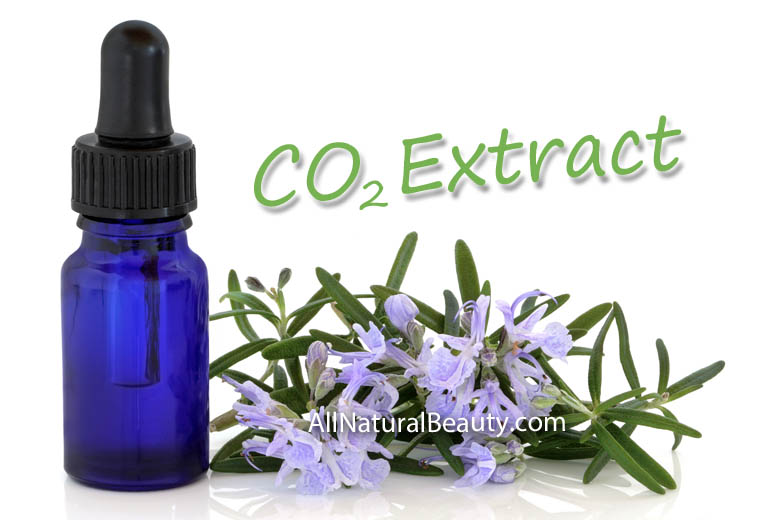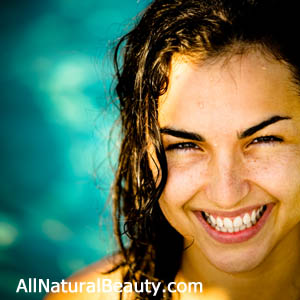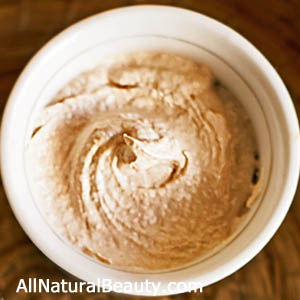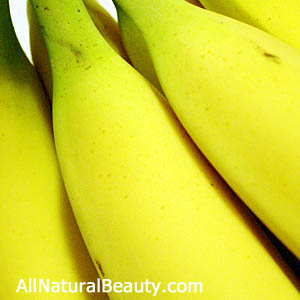
A LITTLE ARTICLE that I cut out from I know not where states, “Sage for Odor Control”. “Research on the feeding habits of deer in Colorado may have uncovered an idea for controlling feedlot odors. Scientists are finding that chopped sagebrush added to the diets of fattening steers reduces odors. The additive has no adverse effect on feed efficiency, carcass quality, or taste of the meat. Oils in the sagebrush change the make-up of the bacterial population in the animals’ digestive tracts, modifying waste odors.”
Could it be that there are actually herbal deodorants? It seems so for cattle, and, fortunately, there are herbal deodorants for humans too. Some of these natural deodorants are eaten to improve one’s personal scent, and some of them are used externally to mask the natural body odors; some used externally seem to combine with one’s odor to complement rather than mask it – usually by not allowing the formation of offensive bacteria. Of course, the easiest deodorizing agent is the daily bath or shower, especially with herbs that sweeten the body scent and improve the texture of the skin.
Body odors are intensified by many factors not the least of which is the horrible processed, “improved,” “enriched” junk food that most Americans seem to like to eat. The next most important factor in body odor is synthetic fabrics that coat our bodies with an impermeable layer – impermeable to air that is – that seem to strangle and suffocate our bodies with its own effluvia. They do not permit the skin to breathe. And added to this diet of processed food and synthetic coverings is that even the very air we breathe is loaded with soot and smog which strangle our pores and clog them with impurities.
Some of the foods directly effecting how we smell are meat and vegetables. It seems that a diet high in meat makes for a stronger body odor, and one higher in vegetables than meat has less of an effect on body odor. Eating yogurt consistently has a beneficial effect by changing the bacterial population, and stress and tension have a negative effect. Alcohol has a definite negative effect.
Experiment with what you eat and maybe you too will find that some foods make you smell better than other foods, just as the scientists discovered with the Sagebrush.
As a matter of fact, Sage (a different genus than Sagebrush) has an historical use as a deodorizing tea. And the Mints, especially Peppermint, are especially useful when you are flatulent (use 2 drops in an ounce of water and drink every hour or so).
1. Witch Hazel leaf or bark decoction or Witch Hazel extract as an underarm splash to remove odor.
2. White Willow bark. An infusion of White Willow bark mixed with borax acts as a deodorant wash for offensive-smelling perspiration. Mix a few drops of oil of Patchouli with the infusion…Herbs & Things, 1972.
3. Orange peel mixed with Lemon peel and powdered is a nice underarm deodorizer.
4. Thyme decoction as an after bath splash.
5. Wearing cotton garments is helpful as well as a diet as natural as possible.
6. Chaparral (creosote) decoction externally applied is a natural deodorizer.
7. Rose Astringent Lotion (See recipe below) is an excellent underarm deodorant that I use daily.
Herbal Deodorant Powder
Mix together equal quantities of powdered Orris root, Orange peel powder, and Lemon peel powder. Add a bit of powdered Calamus root or Licorice root to scent. Now mix it all together and sift through a fine sifter. Use as a powder under the arms, on the pubic area, or on the body. Anything can cause an allergic reaction and Orris root has often caused reactions, so before trying any herb in quantity, try a little bit first and if you get no reaction then it is probably all right for you to use.
The same goes for commercial deodorants. Many of them contain highly suspect ingredients and, unfortunately at this time, there is no law in effect that says they have to list the ingredients on their labels. But if you make your own cosmetics you will know what they are being made of and can, therefore, keep out all suspect ingredients or any materials that you are allergic to.
HEXACHLOROPHENE
There are a least two dozen cosmetic products on sale, including deodorants, body powders, baby powders, and vaginal deodorants, in which hexachlorophene is named as an ingredient. Significant quantities of this chemical have also been discovered in several deodorants, cosmetics, and make-up products without any mention on the container. As you probably are aware, this ingredient has been implicated in various abnormalities of the fetus and has also caused severe allergic reactions in the pubic and underarm areas of many adults. Recent scientific tests indicate that chemicals including hexachlorophene enter the body much more rapidly through the sensitive vaginal area. Wouldn’t it be safer to wash with soap and water and pat a gentle herbal powder on your baby, your underarms, or your pubic area as a deodorant, rather than using an ingredient that might be harmful to you or your child?
Baby Powder
•2 oz. pure unscented Montana talcum powder (arsenic occurs naturally in association with talc, and Montana talc seemingly has the least)
•1 oz. Camomile flowers, PO
•1 oz. Calendula flowers, PO
Mix all ingredients and sift through a very fine sieve. Corn starch can be substituted for the talc. This powder is cooling and absorbent and will be effective in treating diaper rash and other skin irritations.
Body Powder
Many powdered herbs can be effectively used as body powders or deodorant powders; among these are Patchouli, Orris root, Orange peel, Lemon peel, Calamus root, Licorice root, Sandalwood, Marigold, Camomile, Rose, and Lavender. Some of the darker herbs such as Patchouli and Cornsilk, though helpful for skin irritations, will sometimes stain light colored clothes and probably should be mixed with other powders as a body powder rather than as an underarm powder. These darker herbs, of course, can also be effectively used by people with dark skins.
Body Powder Lavender For Men and Women
•2 oz. Lavender, PO (I use a mulinex coffee grinder to powder herbs)
•2 os. fine Montana talc or any other unscented talcum
Mix thoroughly and sift through a fine sieve discarding any large particles. Men particularly like the clean scent of Lavender on their bodies. 1/2 oz. powdered Lemon peel could also be added and would subtly alter the Lavender scent making a Lavender-Lemon powder that is extremely refreshing.
Body Powder For Men
•2 oz. unscented Montana talcum (if desired)
•1 oz. powdered Sandalwood (has antiseptic action and is useful in skin diseases)
•1 oz. powdered Blue Malva or Rose or Vetivert
Mix together thoroughly and then sift through a fine sieve
Body Powder Violet
•2 oz. unscented Montana talcum
•1 oz. powdered Violet flowers (contains vitamins A and C and has a slight antiseptic action when used externally)
•1 oz. powdered Orris root (has caused skin allergies in some but the scent is said to relieve headache)
•4 drops oil of Violet
•2 drops oil of Bitter Almond
Drop the oil of Violet and the oil of Bitter Almond onto the powdered Violet flowers and shake in a closed container. Ad the Orris root and shake again. Add the talcum, mix thoroughly, then sift the entire batch through a fine sieve and store in an airtight container or in an old powder box. This powder has a most delightful light scent.
Orange-Flower Powder
“Put half a pound of Orange Flowers into a box that contains twelve pounds and a half of powdered Starch; mix them well with the Starch, and ftir the mixture at intervals, to prevent the Flowers from heating. At the expiration of twenty-four hours, remove the old flowers and mix with the Starch the fame quantity of frefh Orange Flowers. Continue acting in this manner for three days together, and if you think the perfume not fufficiently ftrong, add frefh Flowers once or twice more. The box muft be kept clofe fhut as well after as during the operation.
-The Toilet of Flora, 1779
This recipe is absolutely delightful but there are few people these days who can get hold of fresh Orange flowers and if they could, they probably would not want to make 13 lbs. of body powder. So, for the same nice powder the following recipe will probably by more than fufficient.
•1 oz. starch or Montana talcum or cornstarch
•1 oz. powdered Orange flowers
Mix together and sift through a fine sieve. This Orange-Flower powder is also quite nice and when made with cornstarch is perfect for babies and their eternal diapering.
Blue Powder For Blue Skins
•1 part powdered Blue Malva
•1 part powdered Bachelor Buttons
•1 part powdered Lavender buds
•1 part powdered Violet flowers
Mix together and then sift through a fine sieve discarding all large particles. Has a nice natural scent and is useful also as a mild stimulant when the scent is inhaled.
Eggshell Body Powder
•2 dozen powdered eggshells (brown egg for brown skin and white egg for white skin)
•1 oz. powdered herbs – Orange peel, Orris root, Cornsilk, Lemon peel, or Licorice root. (Choice depends on the color of your skin and the scent you like.)
•8 drops of essential oil – use Violet oil with Orris root, Orange oil with Orange peel, Anise oil with Licorice root, etc.
Mix all these things together completely and resift.
Rose Astringent Lotion
Bring to a boil 3 cups of white vinegar, remove to a bottle, and add:
• 1/2 oz. Rosebuds
• 1/4 oz. Myrtle berries
• 1/4 oz. Camomile flowers
• 1/2 oz. Jamaica flowers.
Infuse the botanicals for 10 days and shake the bottle daily. Strain carefully through cheesecloth and add an equal quantity of Rosewater. This makes an absolutely delightful facial lotion, aftershave lotion, or underarm deodorant. Really terrific!
From the book “Jeanne Rose Herbal Body Book”
- Education
- Books
- Courses
Ms. Rose is the author of over 20 books, including Herbs & Things, The Herbal Body Book, The Aromatherapy Book, and Jeanne Rose’s Herbal Guide to Food, and she has taught herbs, aromatherapy and distillation extensively throughout the U.S. She organized and was President of the first large Aromatherapy organization in the United States, NAHA, and speaks widely at many other events and conferences. She teaches distillation techniques for quality essential oils throughout various parts of the world. The word, ‘hydrosol’ as used for the waters of distillation, was first used and put in place by Jeanne Rose in 1990.

Aromatherapy Classes,
Certification Weekends and Seminars
taught in person by Jeanne Rose
ENROLL NOW – Visit http://jeannerose.net/calendar.html
or call 415-564-6337 or email aromaticplant@yahoo.com
Enrollment limited.
Seminars are valid for 15 CE and towards Practitioner Certification

Jeanne Rose is the author of 22 books on herbs and aromatherapy. Most recently, Jeanne authored “375 Essential Oils & Hydrosols” which is a complete reference book of 375 aromatic plant extracts and hydrosols with phytochemical, clinical and botanical indices.
She has released several booklets since 2006.

Jeanne Rose is the Director of the Institute of Aromatic Studies, principal tutor of both the Herbal Studies Course© and the Aromatherapy Studies Course – Practitioner© by Distance-study and Aromatherapy Course by home-study.
Learn more about the 3 types of home studies courses:
The Aromatherapy Course
– Home and Family©
AROMATHERAPY STUDIES COURSE©
– Practitioner
HERBAL STUDIES COURSE©
Ms. Rose is the author of over 20 books, including Herbs & Things, The Herbal Body Book, The Aromatherapy Book, and Jeanne Rose’s Herbal Guide to Food, and she has taught herbs, aromatherapy and distillation extensively throughout the U.S. She organized and was President of the first large Aromatherapy organization in the United States, NAHA, and speaks widely at many other events and conferences. She teaches distillation techniques for quality essential oils throughout various parts of the world. The word, ‘hydrosol’ as used for the waters of distillation, was first used and put in place by Jeanne Rose in 1990.


















